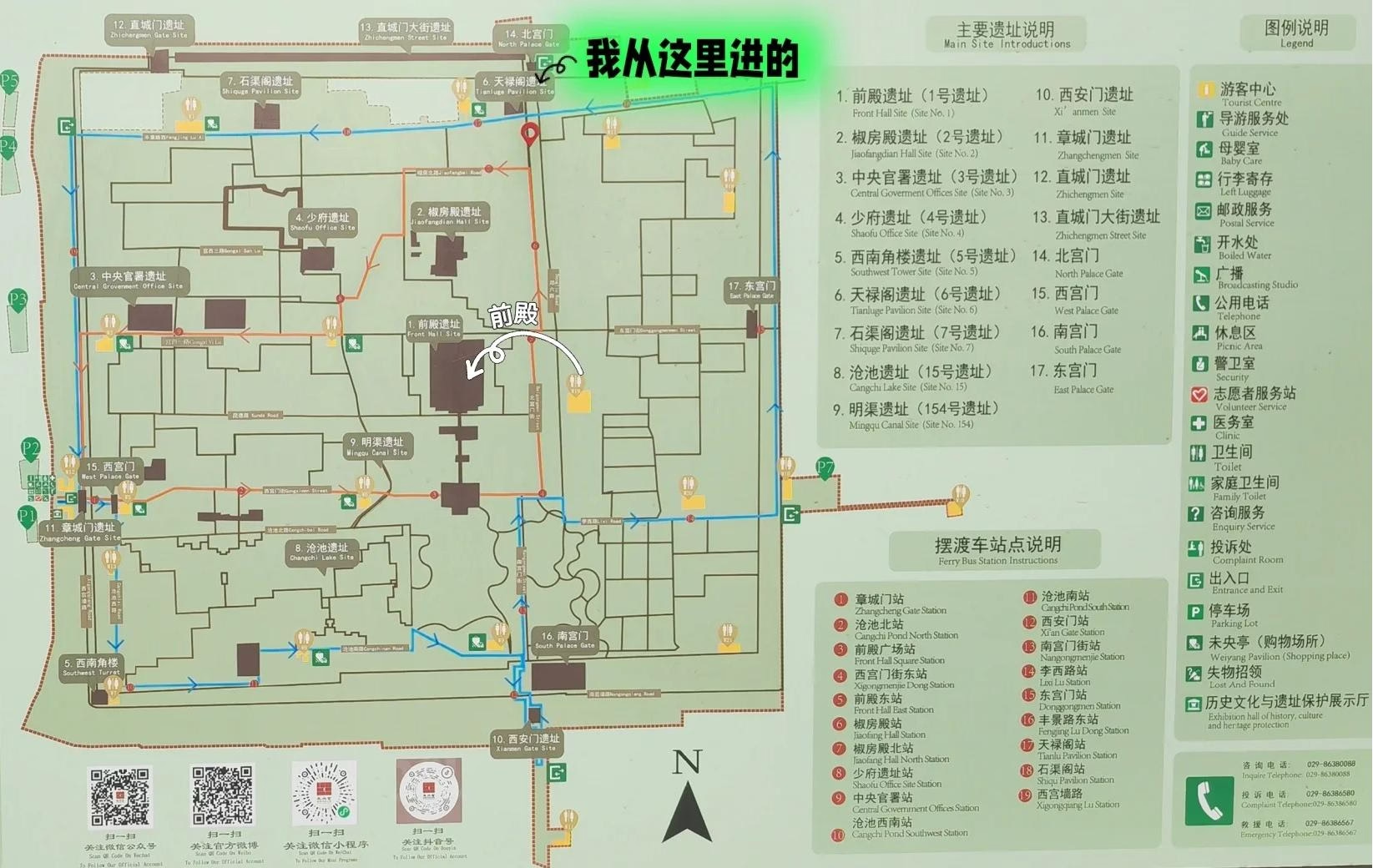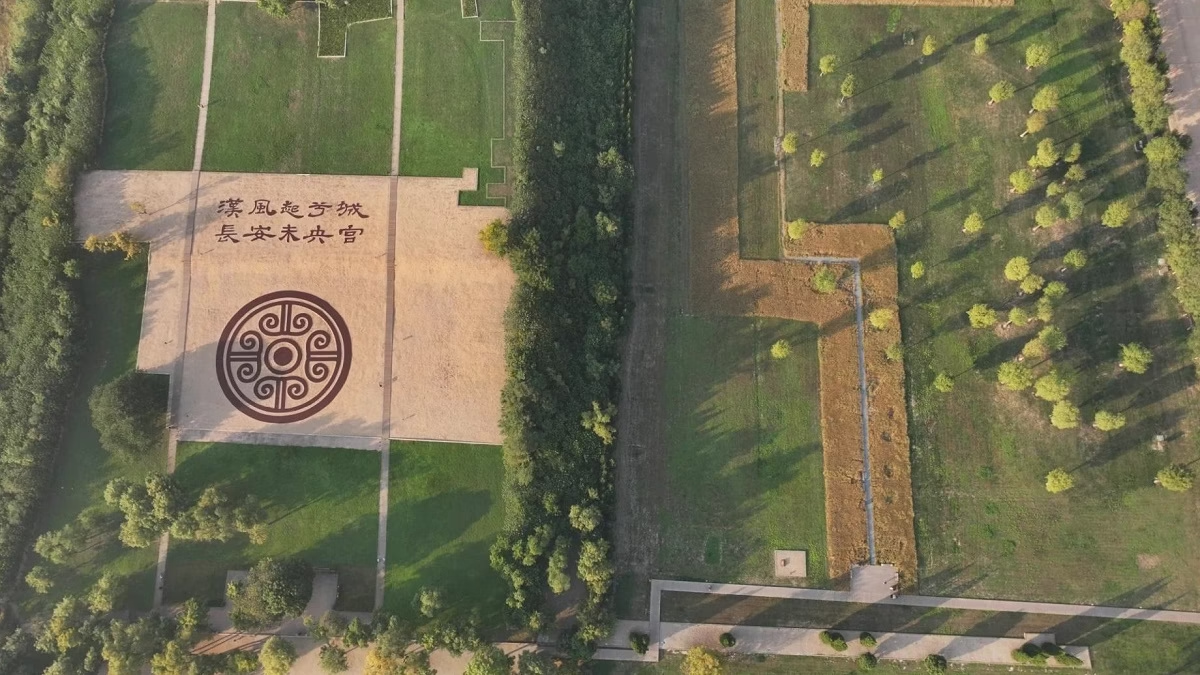The Weiyang Palace Ruins (未央宫遗址, also known as Han Chang’an City Site), located in the heart of Xi’an, is one of the most important historical sites in China, offering a rare glimpse into the ancient capital of the Han Dynasty. Known for its vast size and rich history, this site is a must-visit for history enthusiasts and nature lovers alike. The park, which encompasses the ruins of the Weiyang Palace and its surrounding areas, is an expansive and serene location that combines both archaeological significance and natural beauty. In this guide, we’ll walk you through the key highlights of the site, providing tips on how to explore it and what to see along the way.
A Convenient Entrance and the Layout of the Weiyang Palace Ruins

There are multiple entrances to the Weiyang Palace Ruins, but one of the most convenient is the North Palace Gate (北宫门). While the East and South Gates are the primary entry points for most visitors, the North Gate is a quieter entrance with more shaded areas, offering a more peaceful walk to the front hall ruins. Additionally, parking near the North Palace Gate is convenient, making it a popular choice for those who prefer a less crowded entrance. Entering through the North Palace Gate also allows visitors to pass by notable features like the Tianlu Pavilion and Jiaofang Palace, both of which are key to understanding the grandeur of the Weiyang Palace complex.
The park is open daily from 6:00 AM to 10:00 PM, giving visitors ample time to explore its vast grounds.
Key Highlights and Must-See Areas
As one of the largest and most impressive archaeological sites in Xi’an, the Weiyang Palace is rich in historical significance. The ruins are spread across three main terraces, with each platform containing the remains of ancient palace buildings. The ruins reflect the palace’s original layout and the social hierarchy of the time. The palace covers a north-south distance of 350 meters and an east-west width of 200 meters, making it a colossal structure that was once at the heart of the Han Empire.
- Historical Background: The site takes advantage of the natural terrain of Longshou Mountain, with its undulating hills. Interestingly, there are traces of earlier Qin Dynasty structures, with significant buildings from the era already established on this land, including Zhangtai, the location where the famous events of Lian Xiangru returning the jade and Jing Ke’s assassination attempt on Emperor Qin Shi Huang took place. These historical landmarks add layers of intrigue and context to the palace ruins.
- Architectural Layout: The Weiyang Palace, which remained in use from the Qin Dynasty through the Tang Dynasty, covered more than a thousand years of history. The palace’s three-tiered structure, with each level higher than the one before, creates an imposing silhouette. The northern platform rises 15 meters above the ground, illustrating the grandeur and complexity of the palace’s design.
Famous Sites Within the Palace Complex
- Tianlu Pavilion: Situated at the heart of the palace ruins, the Tianlu Pavilion is famous for housing a statue of Liu Xiang, the father of Chinese bibliography. Liu Xiang’s legacy in cataloging ancient texts made the pavilion a prominent cultural and intellectual hub. It is said that the famous historian Sima Qian visited this pavilion to study the records housed here.
- Looking North to the Han Tombs: From the front hall ruins, visitors can use binoculars to catch a glimpse of the Han Gaozu Tomb (also known as Changling), the mausoleum of Emperor Liu Bang, the founder of the Han Dynasty. On clear days, you may also spot other ancient Han tombs scattered across the landscape.
Exploring the Surrounding Park and Flora
In addition to its historical ruins, the Weiyang Palace site is also a beautiful park. The park is home to a variety of flora, with seasonal flowers blooming throughout the year. In particular, visitors can enjoy the sight of night-blooming jasmine on both sides of the Jiaofang Palace, which adds a fragrant touch to the surroundings. The park’s size allows for an expansive and tranquil atmosphere, with many visitors enjoying a peaceful walk or taking photos of the stunning landscape.
During spring, the park is a riot of color, and the various gardens and flower beds create a beautiful backdrop for photography. The park is often less crowded than other historical sites in Xi’an, such as the Daming Palace, making it a more serene and relaxing place to explore.
The Largest Green Space Within the City’s Third Ring Road
As the largest green space within Xi’an’s third ring road, the Weiyang Palace Ruins Park is a peaceful retreat compared to other city parks. Its open, expansive fields, which include vast stretches of farmland and green spaces, provide a tranquil escape from the hustle and bustle of urban life. Visitors can experience wide, open views of the countryside, making it feel like a peaceful, rural oasis right in the heart of the city.

